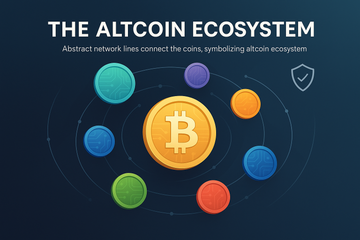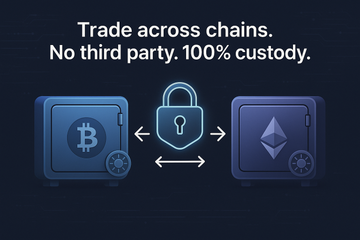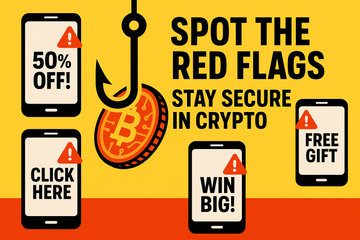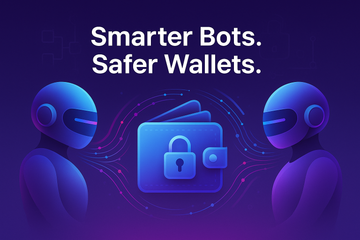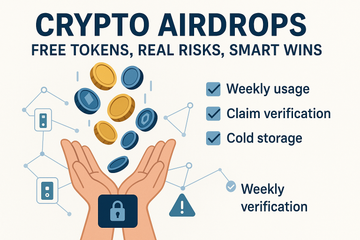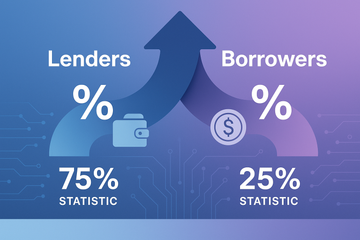Altcoins get a lot of buzz, and for good reason. They cover any cryptocurrency that is not Bitcoin. That sounds simple, yet the story that follows is rich. Each altcoin tries to answer a different question. Faster payments. Programmable money. Private transfers. New ways to fund ideas. And yes, a fair bit of hype. If you have ever watched a token chart on a Sunday night, you know the feeling. It is part thrill, part study session.
Let me explain what really sits under the hood. We will talk about where altcoins fit, what they try to solve, how to judge them, and how to keep them safe. You know what? We will keep it practical, not preachy.
Why altcoins showed up at all
Bitcoin did one thing very well. It proved that a scarce digital asset can exist. No central bank. Rules, not rulers. But the crypto crowd is a restless bunch. Builders asked for new features. So altcoins came to push new frontiers.
Some coins focus on speed. Others focus on privacy. Many turn blockchains into platforms for apps. Think of Ethereum like a global computer with a cost per step. On top of that came DeFi lending, NFTs, and gaming. Other chains, such as Solana, Avalanche, and Polygon, chase higher throughput. They court traders and app builders who want low fees and quick finality.
Different chains, different tradeoffs. That is the honest part. Faster blocks can mean more hardware needs. Deeper privacy can mean tighter rules in some places. It is a menu, and users choose what fits their needs.
The main types of altcoins
It helps to sort the clutter. Categories keep your head clear when the feed gets loud.
- Layer 1 coins: Native assets of base networks. Think ETH, SOL, ADA, AVAX. They pay for gas and secure the chain.
- Layer 2 tokens: Assets linked to networks that scale a base chain. Arbitrum and Optimism run on Ethereum and seek cheaper, faster transactions.
- Stablecoins: Tokens pegged to a currency, often the dollar. USDT, USDC, and DAI keep funds steady during swings.
- Utility and governance tokens: Tokens that give perks or voting rights in an app or DAO. UNI for Uniswap, AAVE for Aave, and many more.
- Privacy coins: Coins that hide sender, receiver, or amounts. Monero and Zcash have strong privacy features.
- Memecoins: Culture coins that move on vibe, community, and timing. High risk. Sometimes fast runs, sometimes rug pulls.
One more note. Coins power blockchains. Tokens ride on top of blockchains. Both get called altcoins in casual talk, and that is fine in day to day chat.
How altcoins move the market
Altcoins often follow Bitcoin, then try to outrun it. When BTC rises and the mood warms up, traders shuffle into smaller caps. Liquidity spreads out. Narratives spark. Maybe it is AI tokens this quarter. Maybe it is real world assets the next. Then, when the music slows, many rush back to Bitcoin or stablecoins. It is the old dance in a new venue.
There is also Bitcoin dominance to watch, the share of total market cap that sits in BTC. When it drops, altcoins are usually getting more of the pie. Not always, but often enough to watch the chart.
How to research an altcoin without guesswork
Good research beats hot tips. Keep it simple, repeat it often.
- Use case and moat: What job does the token help with? Payments, compute, storage, governance, or pure speculation. Is there a real moat, or can any fork copy it?
- Team and history: Are they known. Do they ship. Have they handled stress, hacks, or bugs with care and speed.
- Tokenomics: Total supply, emissions, unlocks, and payouts. Big unlocks can weigh on price. Check vesting cliffs and treasury control.
- Security posture: Audits, bug bounties, and open repos. Admin keys matter. A single switch can be a single point of failure.
- Liquidity and listings: Deep order books reduce slippage. CEX and DEX support helps you enter and exit without drama.
- On-chain health: Active addresses, fees paid, developer activity, and unique users. Tools like Token Terminal, DeFiLlama, and Messari offer helpful dashboards.
It sounds like work, and it is, but your future self will thank you. A few hours of reading can save a few months of regret.
Red flags you should not ignore
Even great tech can carry bad risks. Spot the signs early.
- Opaque token unlocks: If the schedule is unclear, assume the worst.
- Centralized control: A small multisig with power over core functions. That can be fine in a beta phase, yet risky if it stays that way.
- Low liquidity: Thin books, sudden wicks, and wild spreads. Your entry is easy, your exit is not.
- Copy-paste apps: No real innovation, only a fresh logo and a higher fee.
- Promised yields with no path: If you do not see where value comes from, you might be the value.
There is a mild contradiction here. Many winners started scrappy and centralized. Early speed helped them ship. Over time, the strong ones moved toward broader control and better security. The path matters.
Keeping altcoins safe without losing your mind
Storage is where many users slip. Hot wallets feel easy. They are also exposed. Cold storage cuts that risk by keeping keys offline. Hardware wallets are the gold standard for long term holdings and serious users.
Trezor and Ledger are the most known brands. Trezor has open source firmware and a clean flow for passphrases. Ledger supports a wide list of coins and has strong app support. Both handle major chains, ETH tokens, and many Layer 2s. Pick based on the coins you hold and the features you value. Write down your seed phrase on paper or steel. Do not take a photo. Do not share it with anyone, ever.
Use a fresh wallet for testing new chains. Keep approvals in check. Revoke old token allowances with tools like Revoke.cash once in a while. It is like cleaning your kitchen. Boring, but it prevents pests.
For DeFi, connect your hardware wallet through MetaMask or Rabby. Confirm each action on the device screen. If a site looks off, walk away. There is always another trade. There is never another seed.
Building a sane altcoin strategy
Plans beat impulses. They are not perfect, but they keep you steady.
- Set risk tiers: Blue chips like ETH or SOL may hold a core share. Smaller caps get smaller slots.
- Use stablecoins: Keep dry powder. USDC or DAI give you room to act without rushing a bank transfer.
- Mind fees: Gas adds up. Batch actions when it makes sense. Choose the right chain for the job.
- Rebalance: Winners can grow too big. Trimming gains is not a crime. It is risk control.
Honestly, boring wins more often than flashy. Aim for survival first. Then, when the wind is right, you can press.
Trends worth watching right now
Altcoin stories shift fast, but some themes keep coming back.
- Layer 2 growth: Cheaper transactions pull users in. Airdrops, incentives, and fast apps help networks build stickiness.
- Restaking and shared security: New ways to reuse collateral and spread security budgets are getting attention.
- Real world assets: Tokenized treasuries and stable yield markets bring TradFi flavors into crypto rails.
- Memecoins as culture: Not for the faint of heart, yet they drive social energy. Trade small, or just watch for signals.
Seasons change. Halving years wake up interest. Big exchange listings spark flows. Keep your eyes open, not wide shut.
Bridges, fees, and the little details that bite
Moving funds across chains can be messy. Use trusted bridges with a track record. Official bridges from major teams are usually safer than unknown portals with a flashy UI. Keep gas on both sides for the first move. If you get stuck with no gas, you are stuck, simple as that.
Track approvals, session keys, and sign-ins. Read the prompts. A few extra seconds can save a lot of pain.
So, are altcoins worth it
Short answer, they can be. Long answer, it depends on your goals, your time, and your nerves. Altcoins bring new ideas and new risks. Some push the entire space forward. Some fade. The art is knowing which is which before the crowd does. Or at least not being the last one holding the bag.
Take your time. Learn the basics. Guard your keys with a Trezor or a Ledger. Use clear rules, steady habits, and a light touch of curiosity. Crypto rewards the patient, the prepared, and the careful. That can be you, with less stress and more clarity.





